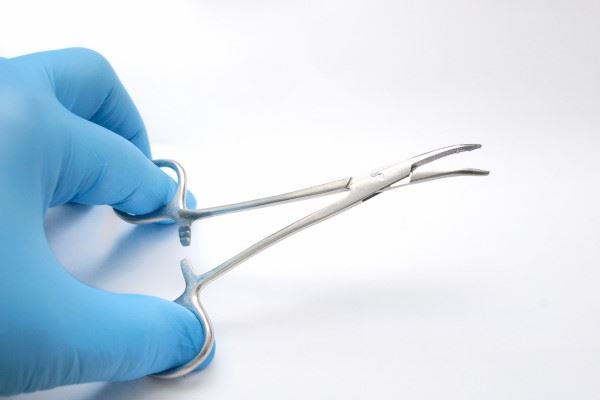-
Home
-
Kelly Forceps: A Versatile Tool in Healthcare
Kelly Forceps: A Versatile Tool in Healthcare
February 13, 2024

Kelly forceps, also known as hemostats or hemostatic forceps, are a type of locking forceps used primarily in the medical field for clamping blood vessels and controlling bleeding during surgical procedures. They provide immediate hemostatic control, reducing the risk of complications associated with blood loss, such as hypovolemic shock, which can be life-threatening. In this article, we will delve into the design, uses, and significance of Kelly forceps.
What are Kelly Forceps?
Kelly forceps are crafted from high-grade stainless steel, ensuring durability through repeated use and the ability to withstand the rigors of sterilization processes. The instrument features a specialized locking mechanism that allows the jaws to clamp onto objects securely. This mechanism is activated by a ratchet near the handle, enabling the forceps to maintain grip without continuous pressure from the user, thus reducing hand fatigue during prolonged surgical procedures.
The tip of Kelly forceps can be straight or curved, with each design serving specific purposes. Straight tips are generally used for clamping larger vessels and tissues that are easily accessible, while curved tips are preferred for reaching deeper or more angled vessels and tissues. The jaws of Kelly forceps are half-serrated, providing a secure grip without causing significant damage to the tissue.
What are Kelly Forceps Used For?
Kelly forceps have a wide range of applications in both surgical and nonsurgical settings. In surgery, they are primarily used for hemostasis—stopping bleeding by clamping and holding blood vessels until they can be sutured or cauterized. This function is critical in preventing excessive blood loss during operations and ensuring a clear surgical field for improved visibility and precision.
The versatility of Kelly forceps makes them a valuable tool not only in general surgery but also in specialties such as obstetrics, gynecology, and emergency medicine. Apart from their primary use in controlling bleeding, Kelly forceps are also used for holding and manipulating tissues, removing small foreign objects, and suturing. In emergency settings, they can be used to clamp umbilical cords during childbirth or in first aid to control severe bleeding.
How Do You Open Kelly Forceps?
Using Kelly forceps efficiently requires understanding their locking mechanism and handling techniques. To open these instruments and prepare for use, follow the basic instructions below.
- Hold the Forceps Correctly: Grasp the forceps in your dominant hand, similar to holding a pen. Your thumb should go through one ring, while your ring finger or middle finger goes through the other. This grip provides stability and control.
- Release the Lock: Kelly forceps have a locking mechanism consisting of interlocking teeth near the finger rings. To open the forceps, gently press the handles together slightly to relieve tension on the locking mechanism, then slide the interlocking teeth apart. This action requires a delicate touch to avoid snapping the forceps open, which could damage the mechanism or cause injury.
- Adjust the Opening: Once unlocked, you can control the opening of the forceps by adjusting the pressure between your fingers. As you apply pressure during use, the locking mechanism will engage, allowing the forceps to hold the tissue or vessel securely without continuous manual pressure.
Kelly forceps offer precision and reliability that significantly contributes to the success of various surgical interventions. Their design reflects a balance between functionality, tissue safety, and surgical efficacy, showcasing their unique role in the medical field. Whether you're a nurse, doctor, or surgeon, having a reliable pair of these versatile instruments in your toolkit can help you perform a variety of procedures more effectively.